Welcome to the RM Risk Management Blog
This is the area for all things RM news related

COVID19 Legionella risk post lockdown
When tackling the spread of the COVID19 virus, it has been easy for property managers to lose focus on general day to day obligations. It is important for property managers to ask what is the impact of the COVID19 lockdowns on the risk from legionella bacteria. In many instances, reduced staff on site constitutes as a significant change to a property and therefore the COVID19 legionella risk should be re-assessed. At this time, Health and Safety Law continues to apply and duty holders still maintain a legal obligation to protect those in and around their properties from exposure to legionella bacteria both now and in the future. Legionella bacteria can grow at temperatures between 20°C and 45°C, where a suitable nutrient is available and where turnover of water is low. As businesses increasingly move to a home-working model, the demand for water in many commercial buildings will be significantly reduced. […]
Read More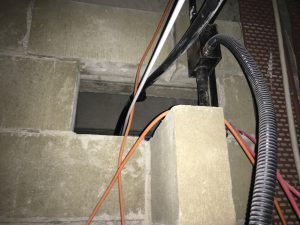
Fire Stopping Surveys – Taking Action
What is Fire Stopping? Fire stopping is the sealing of gaps, breaches or issues found around fire resistant floors, doors and construction. It is a range of compliant products that are installed to help slow the spread of fire through a building. The materials used in a fire stop must be able to resist fire for a reasonable period of time. Sometimes, fire stopping is not applied correctly or even at all by contractors, at times when construction or refurbishment or minor works occur within a property. If there is no fire stopping around the engineered fire resistant areas, if it has been incorrectly installed or if cracks and openings are appearing around existing fire stopping, this ultimately puts lives at risk. Do I need a Fire Stopping Survey? In order to determine whether there are any issues, a Fire Stopping Survey needs to be conducted. A Fire Stopping Survey, […]
Read More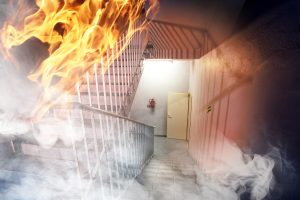
Taking Fire Safety Seriously
A few weeks ago, Fire Safety Matters reported that more than 7,000 Londoners are to get new fire doors. This is part of a £9,000,000 project to upgrade fire doors in six London boroughs across twelve City of London Corporation-run housing estates. All front, communal and fire escape doors will be replaced in over 2,300 homes, ensuring that there is an enhanced up to 60 minute fire resistance. This enormous project comes down to one simple thing: keeping residents safe. Since the Grenfell Tower incident, there has been a new focus on residents’ safety, and it is the duty of all responsible organisations and people to make sure that all the necessary steps are taken to minimise any risks when it comes to fire. Big Costs One of the more recent cases to hit the news that demonstrates how important fire safety is has been the incident in Palmer’s Green. […]
Read More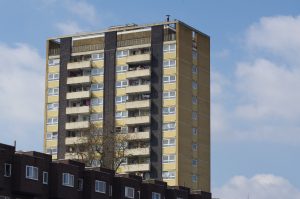
Quarterly Fire Door Surveys to become law
Following the Grenfell Tower Inquiry, the upcoming fire safety bill will state that fire door surveys will need to be conducted in all blocks of flats, every three months. Changes in legislation The FIA (Fire Industry Association) last week reported upon this proposed big change in the law. Currently there is no specific legislation in place that requires fire doors surveys to be underaken, but these sorts of assessments play a huge role in fire safety. Although changes such as the fire door surveys have come about following the Grenfell Tower Inquiry Report, the report in itself only stated that “all fire doors, including their closers, should be routinely checked or inspected by a suitably qualified professional.” However, it seems the government wants to take this more seriously and it will be insisting on checks every three months. The FIA’s article highlighted that “Housing secretary Robert Jenrick has stated that […]
Read More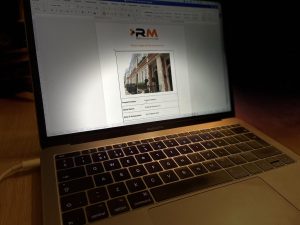
Understanding your Legionella Risk Assessment
There is often a misconception that a Legionella Risk Assessment is just looking for the presence of Legionella; as if it’s a tick boxing exercise to state whether or not it’s present. In fact, a Legionella Risk Assessment assesses not just whether Legionella is present but what the risks are of the bacteria emerging. It’s about making sure that your site is safe and recommends actions to reduce the risk from Legionella bacteria. To give you guidance on what’s involved in a Legionella Risk Assessment and how you should use a Legionella Risk Assessment report, we’ve answered some key questions: What is a Legionella Risk Assessment? During a Legionella Risk Assessment, we are not looking for Legionella in the system. We look to identify the conditions that encourage Legionella to grow. Following on from our assessment, we recommend steps to eliminate or reduce that risk, making sure the site is […]
Read More
Notification for tenants and service providers regarding the Coronavirus Pandemic
The government has stated that based on the World Health Organization’s declaration that this is a public health emergency of international concern, the UK Chief Medical Officers have raised the risk to the public from low to moderate regarding the Coronavirus. Whilst the number of cases in the UK still remains low and we must keep this in mind, this rise in the risk highlights the importance of planning ahead. Services to properties must be maintained with as little disruption to everyday business activity as possible, but we must ensure that we are prepared to take action to reduce any risk to tenants and workers alike. Adequate resources need to be in place to minimise the spread should there be an outbreak, and procedures should be planned in and communicated so that all relevant parties are aware of the situation. We believe it is important that discussions take place between […]
Read More
What are the different types of Fire Strategy & does a building need one?
In recent years, the fire safety industry has had a massive shake-up. Events such as the Grenfell Tower fire and other large-scale fire disasters has meant that more duty holders are starting to ask the necessary questions when it comes to fire safety. Some property owners have reconsidered their Fire Strategy and many have begun to explore the different types of Fire Strategy services that are available, as they question which type is required for their buildings. A Fire Strategy acts as ‘the bible’ for a building’s fire safety measures and consolidates all building information into one report. Consulting a Fire Strategy usually answers any questions relating to fire safety in a building. Having a Fire Strategy means it’s a lot easier to review fire safety measures and make certain decisions – on safe occupancy levels for example. Having said this, fire strategies often go missing during a building’s sale […]
Read More
New Government Measures to Improve Building Safety Standards
Last week the government announced new measures to improve building safety standards. The Housing Secretary, Robert Jenrick, detailed that the new Building Safety Regulator within the Health and Safety Executive will go “further and faster to ensure residents are safe in their homes.” The new Regulator will give effective oversight of the design, construction and occupation of high-risk buildings. A press release from the government stated that “from next month [Mr Jenrick] will start to name building owners where remediation has not started to remove unsafe Aluminium Composite Material (ACM) cladding from their buildings.” It also stated that “the government will consult on extending the ban on combustible materials to buildings below 18 metres and will seek views on how risks are assessed within existing buildings to inform future policy.” The new Bill has been driven forward following both the fire at Grenfell Tower and more recent high-rise fires such […]
Read More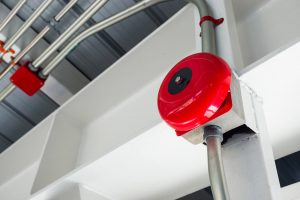
Poor Evacuation Methods Prove Costly for Rotherham United
Rotherham United football club has been fined £150,000 after pleading guilty to a single offence under the Regulatory Reform (Fire Safety) Order 2005. The offence dates back to January 2015 where, on a non-match day, two functions held in the conference and events suites had to be evacuated following a fire alarm. It turned out there was no fire and nobody was harmed during the evacuation, however a club statement detailed that “the incident highlighted issues in the co-ordination of evacuation measures for non-match day events at the stadium between the Club and its third party hospitality partner.” Following the events, the club launched an internal investigation and quickly took action to introduce more robust procedures. However, it can sometimes be too late to review things after an event, and Rotherham was lucky that this incident turned out to be harmless. Emergency procedure planning can literally be the difference between […]
Read More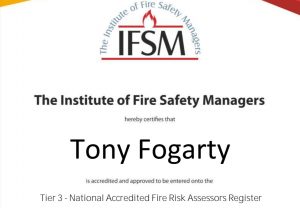
Tier 3 NAFRAR Accreditation for RM’s Tony Fogarty
Tony Fogarty, Managing Director at RM Risk Management, has been accredited and approved to be entered onto the Tier 3 National Accredited Fire Risk Assessors Register (NAFRAR). Tier 3 is a list of individuals who are able to carry out Fire Risk Assessments on high risk and complex buildings. They have registered through a process that has recognised their achievement at the highest standards and levels of competency for fire risk assessors that is available. Tony says, “There is a great deal involved in any Fire Risk Assessment, but with high risk or complex buildings it’s even more important to know what you’re doing. We pride ourselves in giving our clients the best support possible, and that means we believe in training and development and always understanding what is happening in the area of risk.” Tier 3 is the highest tier on the Fire Risk Assessors Register, a system set […]
Read More